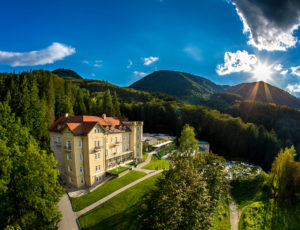Talk about alpacas also means groped to tell a brief history of an animal that dates back to about 5000 years ago, a descendant of the family of camelids and “cousin” of the blade, used to live at an altitude of between 3500 and 5000 meters in the Andean highlands of southern Peru.
The alpacas were already appreciated by the Incas, who defined them, in fact, “the gold of the Andes.” Too small as work animals or to be ridden, were bred mainly for their wool – extraordinarily warm and soft – but also for the sacrifices and for meat. Their wool was considered the “fiber of the gods” and many tissues were found dating back to that time but only the emperor, his family and the most important members of the court could wear garments made with this fine fiber.
Even today, the alpaca wool is synonymous with luxury and elegance, is very valuable and is the handicraft Peru’s best known (in fact the craftsmanship tissue is protected in Peru, UNESCO as intangible asset of universal interest) and the pueblo of Chinchero in Valle Sagrado, is the most important center for the production of handmade fabrics.
Alpaca fiber of the gods.
The Alpaca wool is renowned for being extremely soft, silky and tough. It is elastic and non-flammable and has unique thermal properties that allow retention of heat at low temperatures. In its characteristics, we find a wide range of natural colors ranging from pure white to fawn at the range of brown to gray to black and nuanced; in total there are 24 colors so far recognized by the textile industries. Each female alpaca produces about 2.5 kg, while males can grow to about 4 pounds of wool per year. The wool of the “Cria”, the little alpaca, is the most valuable for the brilliance and lightness, the wool does not contain lanolin, does not felt and gives no allergies.
The future of the alpaca: cooperatives alpaqueros in Peru.
Pacomarca is an experimental farm owned by the Inca Tops SAA, a large Peruvian exporting company which handles the collection and initial processing of alpaca fiber, which is in implement the most advanced program in international sustainable farming, aimed at breeding alpaca through processes of selection and embryo transfer, with the aim of increasing the rate of reproduction, which is currently very low, and improves your material.
the Mallkini Ranch, in the province of Azángaro (Puno), owned by the Michell Group, is the largest private property in Peru of Alpaquero operating since 1995 aims to improve the quality of alpaca fiber through the teaching of modern farming techniques and training to local communities to improve their living conditions, in addition to promoting ecotourism in the department of Puno.
In Arequipa, located Mundo Alpaca, also owned by the Michell Group, complex eco-tourism where one realizes the finest Peruvian alpaca. Those lucky enough to visit it can admire the skill of the workers who, by hand, choose the best alpaca, and the expert weavers who come from the rural communities of Cusco.
You might also like
More from Archivio
(Italiano) La proposta di Rimske Terme per i ponti di primavera
(Italiano)I lunghi ponti del 25 aprile e del 1° maggio sono da sempre un’occasione per trascorrere qualche giorno di vacanza …
(Italiano) Trytaly: la vera cucina italiana per i turisti di tutto il mondo
(Italiano)Quante volte vi è capitato di viaggiare all’estero e di rimanere delusi dalla cucina del posto? Troppo spesso, infatti, succede di …
(Italiano) The Party Edit by Pronovias: moderna, attuale, all’avanguardia
(Italiano)Pronovias, il marchio leader mondiale nel settore della sposa di lusso, presenta una nuova linea, Pronovias The Party Edit, disponibile …












